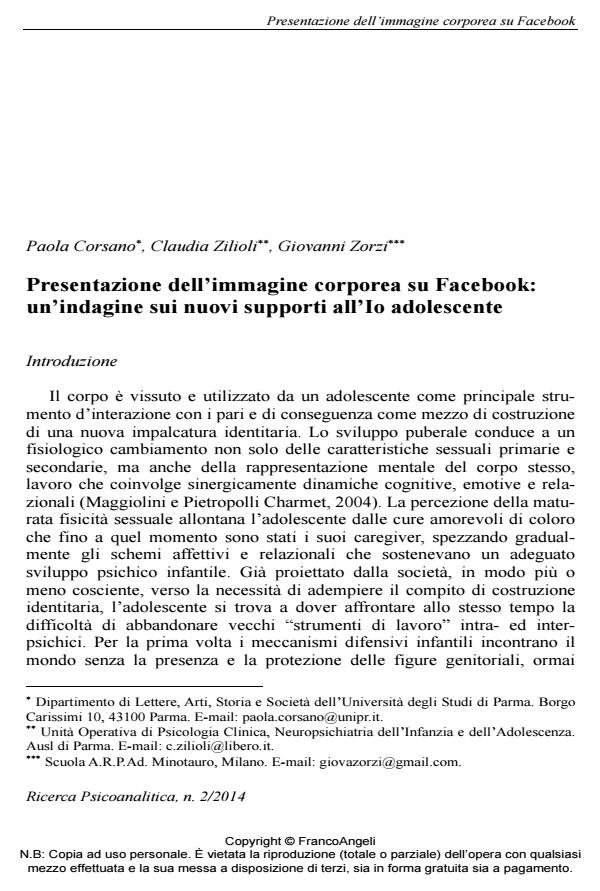Presentation of the body image on facebook. A survey of the new supports for adolescent egos
Journal title RICERCA PSICOANALITICA
Author/s Paola Corsano, Claudia Zilioli, Giovanni Zorzi
Publishing Year 2014 Issue 2014/2
Language Italian Pages 20 P. 71-90 File size 641 KB
DOI 10.3280/RPR2014-002005
DOI is like a bar code for intellectual property: to have more infomation
click here
Below, you can see the article first page
If you want to buy this article in PDF format, you can do it, following the instructions to buy download credits

FrancoAngeli is member of Publishers International Linking Association, Inc (PILA), a not-for-profit association which run the CrossRef service enabling links to and from online scholarly content.
The paper describes a survey on the relation between selection and editing of pictures posted on Facebook and body image in adolescence. 588 young persons (296 males and 292 females) aged between 12 and 19 (average 15.9, standard deviation 1.9) were administered the Pubertal Developmental Scale (Petersen et al, 1988), the Body Esteem Scale (Mendelson, Mendelson, White, 2001) and a questionnaire on picture editing prepared for this study. Data shows (especially for girls) an inverse correlation between editing of pictures and body esteem, age and perception of pubertal development. For all subjects the distress deriving from seeing one’s physical flaws on Facebook is negatively correlated with body esteem. Data shows that selection and editing of pictures posted on Facebook in the case of girls with low body esteem is aimed at showing an improved body image. The study suggests some reflections on the role of social networks in the process of acceptance of one’s body and of identity construction in adolescence.
Keywords: Body image, self-esteem, social networks, adolescence, communication through computers, photoediting
Paola Corsano, Claudia Zilioli, Giovanni Zorzi, Presentazione dell’immagine corporea su Facebook: un’indagine sui nuovi supporti all’Io adolescente in "RICERCA PSICOANALITICA" 2/2014, pp 71-90, DOI: 10.3280/RPR2014-002005